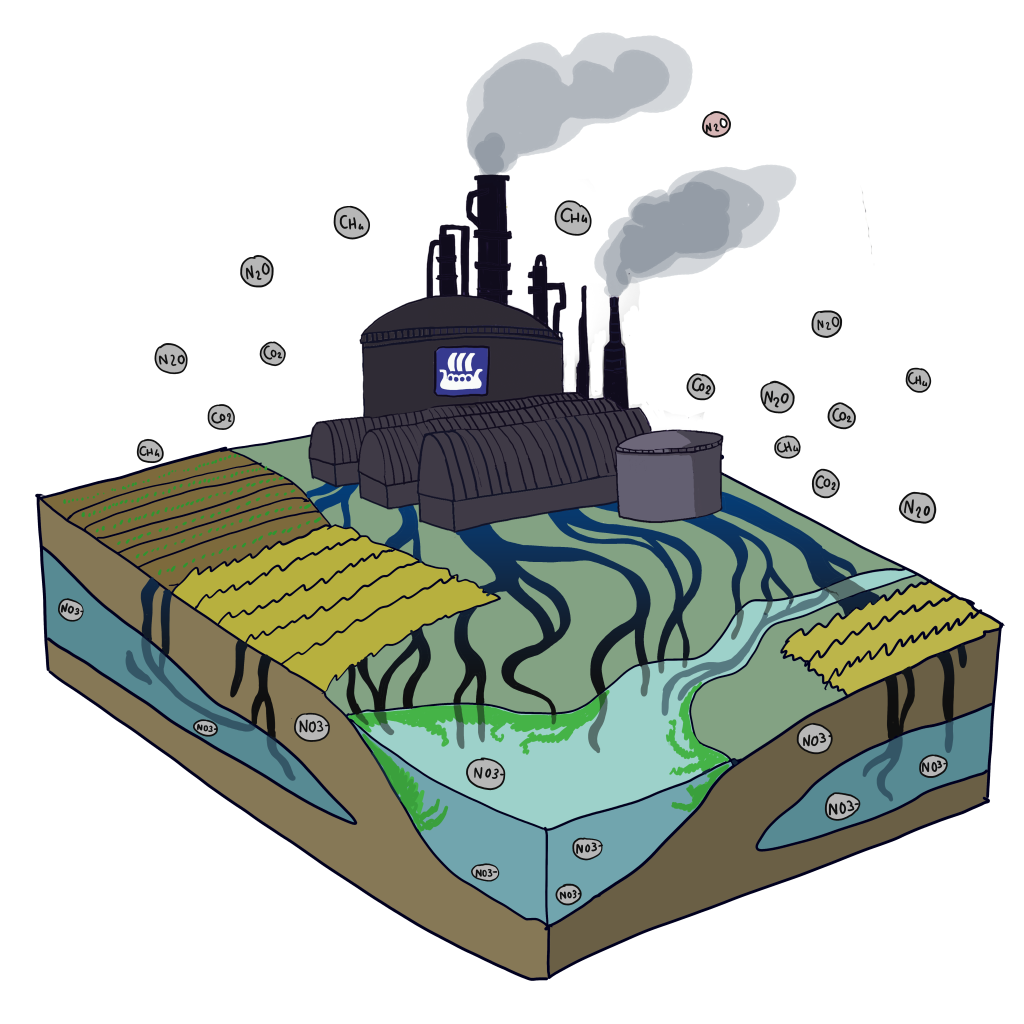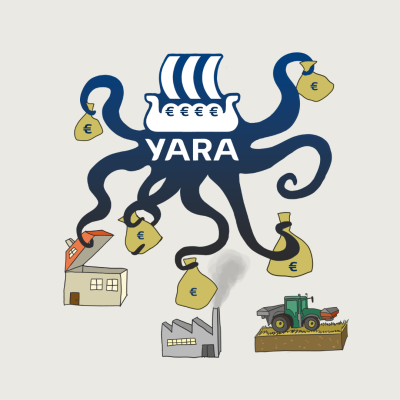
Fertilizers massively pollute water and air. Because plants only absorb around half of the nitrogen applied to the crops, the rest leeches into rivers, lakes, the ocean, and the groundwater, causing an excess of nutrients that feeds seaweeds. These seaweeds absorb all waterways oxygen, causing the death of marine biodiversity. This is the phenomenon of eutrophication and “dead zones” that are found even in the ocean. The resulting overload of nitrates in our drinking water are linked to colorectal cancer, thyroid diseases, and neural tube defects.
Fertilizers contaminate air with ammonia emissions. In the air, these emissions turn into fine particles that, yearly in Europe, cause tens of thousands of premature deaths. Local communities around fertilizer plants suffer from water contamination and air pollution. Around several of Yara’s plants in France and Belgium, local communities fight against the ammonia air pollution and non-treatment of Yara’s wastewater. Each year in Europe, the annual environmental and health costs of fertilizers far exceed the ‘value’ of the industry’s production by approximately 70 million euros.
References:
Aubert, C. (2021). Les apprentis sorciers de l’azote: La face cachée des Engrais azotés. Conseils d’expert. (book)
Sutton MA, Howard CM, Erisman JW, et al., eds. The European Nitrogen Assessment: Sources, Effects and Policy Perspectives. Cambridge University Press; 2011. (assessment)









